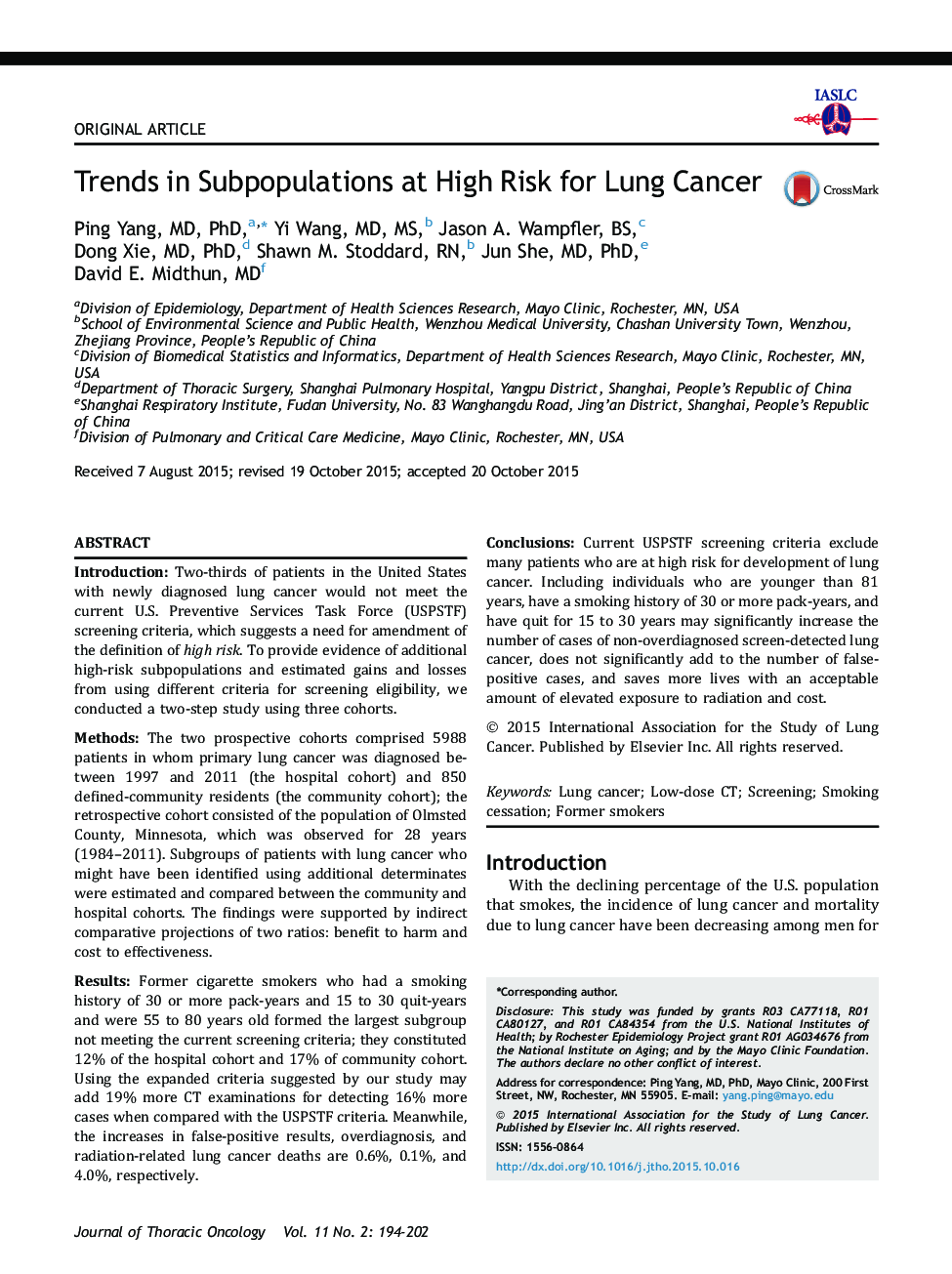| کد مقاله | کد نشریه | سال انتشار | مقاله انگلیسی | نسخه تمام متن |
|---|---|---|---|---|
| 3989407 | 1258678 | 2016 | 9 صفحه PDF | دانلود رایگان |
IntroductionTwo-thirds of patients in the United States with newly diagnosed lung cancer would not meet the current U.S. Preventive Services Task Force (USPSTF) screening criteria, which suggests a need for amendment of the definition of high risk. To provide evidence of additional high-risk subpopulations and estimated gains and losses from using different criteria for screening eligibility, we conducted a two-step study using three cohorts.MethodsThe two prospective cohorts comprised 5988 patients in whom primary lung cancer was diagnosed between 1997 and 2011 (the hospital cohort) and 850 defined-community residents (the community cohort); the retrospective cohort consisted of the population of Olmsted County, Minnesota, which was observed for 28 years (1984–2011). Subgroups of patients with lung cancer who might have been identified using additional determinates were estimated and compared between the community and hospital cohorts. The findings were supported by indirect comparative projections of two ratios: benefit to harm and cost to effectiveness.ResultsFormer cigarette smokers who had a smoking history of 30 or more pack-years and 15 to 30 quit-years and were 55 to 80 years old formed the largest subgroup not meeting the current screening criteria; they constituted 12% of the hospital cohort and 17% of community cohort. Using the expanded criteria suggested by our study may add 19% more CT examinations for detecting 16% more cases when compared with the USPSTF criteria. Meanwhile, the increases in false-positive results, overdiagnosis, and radiation-related lung cancer deaths are 0.6%, 0.1%, and 4.0%, respectively.ConclusionsCurrent USPSTF screening criteria exclude many patients who are at high risk for development of lung cancer. Including individuals who are younger than 81 years, have a smoking history of 30 or more pack-years, and have quit for 15 to 30 years may significantly increase the number of cases of non-overdiagnosed screen-detected lung cancer, does not significantly add to the number of false-positive cases, and saves more lives with an acceptable amount of elevated exposure to radiation and cost.
Journal: Journal of Thoracic Oncology - Volume 11, Issue 2, February 2016, Pages 194–202
